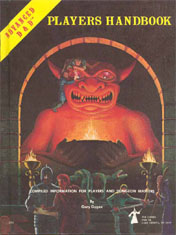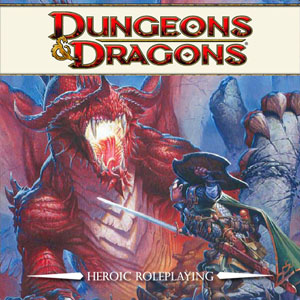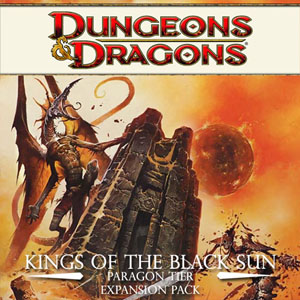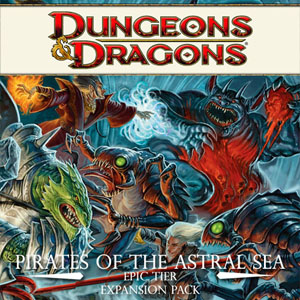
In response to the Update from the Crypt of Luan Phien, Poe asked me:
Out of curiosity, do you rely solely on the players’ expertise when developing maps or do you use some form of skill checks to indicate a character’s expertise in determining what’s going on with an unusual map situation like this one?
In the case of that particular map, it was primarily player expertise that crunched out the workings of the crypt. But Poe’s question got me thinking about the wider question of how GMs make rulings while running a roleplaying game.
First, I prefer to use systems which offer broad mechanical support for GM rulings. Some people prefer pure GM fiat, but I like having a mechanical base to make rulings from because:
- It allows me to make a ruling of uncertainty. (Instead of saying “that definitely happens” or “that definitely doesn’t happen”, I can say, “That sounds likely, let’s see if it happens.”)
- It allows for varying character capacity to have a meaningful impact on events.
- It can provide guidance when I’m not certain how to rule.
- The mechanical outcome is an improv opportunity, often spurring me to create things which I would not have created otherwise.
- It provides a consistency to similar rulings over time.
And so forth. In general, badly designed rules act as unreasonable straitjackets. Good rules, on the other hand, enable new forms of play and expand the scope of the game.
With all that being said, my general approach to making rulings as a GM basically looks like this:
- Passive observation of the world is automatically triggered.
- Player expertise activates character expertise.
- Player expertise can trump character expertise.
PASSIVE OBSERVATION IS AUTOMATICALLY TRIGGERED
Passive observation may include stuff that’s obvious to everybody (like walking into a room with a giant ball of flame hovering in the middle of it), but it might also include reactive mechanics for determining whether or not characters notice something that isn’t automatically apparent. In OD&D this would include surprise tests. In D&D 3rd Edition, this would include Listen, Spot, and Knowledge checks (although these skills can also be used in non-reactive ways.)
(Why am I including Knowledge skills here? Imagine that the characters walk into a room with a large heraldic shield painted on the wall. Do the characters recognize that as the archaic heraldry of King Negut III of Yrkathia? If they do, the players shouldn’t have to ask if they recognize it — they just recognize it.)
But now we get to the real heart of the matter. This is where a player says, “I want to do X.” And you need to make a ruling about how to resolve the outcome of X.
PLAYER EXPERTISE ACTIVATES CHARACTER EXPERTISE
What I mean by this is that the characters don’t play themselves. With the exception of purely passive observation of the game world, players have to call for an action which requires a skill check in order for the skill to be activated.
If we consider a simple example, like:
Player: I check the chest for traps.
GM: Make a Search check.
This may seem self-evident to most of us. On the other hand, I have seen games where GMs will respond to “I open the chest” by calling for the Search check. You may have also heard players say things like, “My character is a 12th level rogue. She would have known better than to open a chest without checking it for traps first!”
I can see the potential legitimacy of the philosophical question being raised. Regardless of which approach we take, there is a point at which the player’s control of the character seems to stop. Consider that simple Search check again: The player decides to check the chest for traps, but then we’re allowing the mechanics to determine how, based on the character’s expertise, that search happens. But could we not, with equal validity, say that when the player decides to open the chest, we should allow the mechanics to determine how, based on the character’s expertise, that happens?
In general, however, I would point out that an integral part of roleplaying is, in fact, playing your role — i.e., making choices as if you were your character. When you turn meaningful choices over to the game mechanics instead of making them yourself, I would argue that you are no longer roleplaying.
Of course, on the other end of the spectrum you have a variety of pixel-bitching. Here you’re never allowed to turn the resolution of an action over to your character and searching the chest becomes a litany of detail:
Player: I check the chest for traps.
GM: How do you do that?
Player: I check under the chest for a pressure plate.
GM: How do you do that?
Player: I run my fingers around the perimeter, looking for any edges. Then I’ll pour some water around to see if it sinks into any sort of depression. Then I’ll very carefully lift one corner of the chest just high enough that I can slide a piece of parchment under there and see if it strikes any sort of spring-loaded trigger that’s rising with the chest.
(Or, if you’re playing with GM bastardy: “I check under the chest for a pressure plate.” “You lift the chest to look, triggering the pressure plate!”)
There is certainly some art in figuring out where the “sweet spot” is for activating the character’s expertise. But 99 times out of 100 it’s going to be fairly self-evident. When in doubt, look for the meaningful choice. Or, rather, never assume that a character is doing anything which requires a meaningful choice unless the player makes that choice.
PLAYER EXPERTISE CAN TRUMP CHARACTER EXPERTISE
On the other hand, you also don’t want to negate meaningful choices by insisting that certain actions must be handed off to the character’s expertise. That’s why I say that player expertise can trump character expertise.
Sticking with our chest-searching motif, consider a scenario in which there is a hidden compartment in a chest which can be accessed by lifting out the bottom of the chest. We’ve determined that the hidden compartment requires a DC 17 Search check to discover. The player says:
- “I search the chest.”
- “I check the bottom of the chest for hidden compartments.”
- “I take my axe and smash open the bottom of the chest.”
- “I check the chest for traps before opening it.”
- “I check the lid of the chest for hidden compartments”.
The first example is vanilla. You’ve handed the resolution over to the mechanic and you get a flat Search check against the DC of the hidden compartment. A success could generate a number of different responses (ranging from “yup, there’s a hidden compartment” to “you notice that the exterior of the chest is several inches deeper than the interior of the chest“).
The second example is more specific (and happens to coincide with what’s actually there to be found). I would tend to grant some kind of bonus to the Search. If there were other things to be found in the chest, I might also allow the Search check to find them (but since you’re specifically looking for something else, such a check might have a penalty applied to it).
In the third example you’ve taken an action which would automatically find the compartment. No Search check is required. (Player skill has completely trumped the mechanic.)
The fourth and fifth examples demonstrate that trumping character skill isn’t always a good thing. In the fourth example, you have no chance of finding things hidden inside the chest if you’re limiting your search to the exterior. Similarly, in the fifth example you’re specifically looking in the wrong place.
As another example, consider a hallway with a pit trap in it. The pit trap has a 50% chance of activating whenever someone steps on it and it requires a DC 17 Search check to find it. The player says:
- “I search the hall for traps.”
- “I proceed carefully down the hall, tapping ahead of me with my 10-foot pole.”
- “I summon a celestial badger and have it walk down the hall in front of me.”
- “I pour a waterskin onto the floor to see if it runs down any seams or gaps.”
The first example is, once again, a straight forward Search check. The second and third examples bypass the Search mechanics, and instead grant a 50% chance that the pole or summoned creature will trigger the trap.
The fourth example, on the other hand, could be handled in several ways. One could easily rule that such a technique would automatically find the trap (particularly if the player specifies exactly which section of corridor they’re checking). If not, I’d probably at least grant a hefty bonus (say, +10) to the Search check for using an appropriate technique.
In many ways, this comes back to meaningful choice: We assumed before that characters don’t take actions which require meaningful choice unless the player makes that choice. Here we assume that any choice the player makes is probably meaningful and take the specificity of those choices into account when we make our ruling.
THE CRYPT OF LUAN PHIEN – AN EXAMPLE FROM REAL PLAY
Let’s consider the specific example of mapping the Crypt of Luan Phien, a segmented dungeon in which each section periodically rotates independently in order to change the layout of the dungeon.
At the high end, we can imagine a player saying, “I make a Knowledge (dungeoneering) check to make a map of the dungeon.” To which my answer would be, “No.” (They’ve failed to achieve the necessary specificity to activate their character’s expertise.)
In actual play, the mapping of the dungeon was solved almost entirely through player expertise. They simply observed which rooms connected to each other and slowly built up an understanding of the possible configurations of the dungeon. (The sole exception would be late in the process, when they started checking corridors to find the wall seams which would confirm their understanding of where the breaks between segments lay.)
But I can think of several ways that they could have activated their character’s skills:
- Check the curvature of the stone walls that periodically blocked various hallways in order to determine (at least roughly) the circular diameter of each section.
- Try to determine the direction in which each section was rotating.
- Try to figure out how much stone would slide past an open corridor between sections in order to determine how far each section was rotating.
- Use a compass or spell to determine orientation before and after a shift.
And so forth.
Go to Part 2
THE ART OF RULINGS
Part 2: Intention and Method
Part 3: The Fiction-Mechanics Cycle
Part 4: Default to Yes
Part 5: Skill and Difficulty
Part 6: Fictional Cleromancy
Part 7: Vectors
Part 8: Let It Ride
Part 9: Narrating Outcomes
Part 10: Fortune Positioning
Part 11: Narrative vs. Action Resolution
Part 12: Hidden vs. Open Difficulty Numbers
Part 13: Hidden vs. Open Stakes
Part 14: Group Actions
Addendum: Let It Ride on the Death Star
Rulings in Practice: Gathering Information
Rulings in Practice: Perception-Type Tests
Rulings in Practice: Social Skills
Rulings in Practice: Sanity Checks
Rulings in Practice: Traps
FURTHER READING
The Art of Pacing
The Art of the Key
Gamemastery 101
















